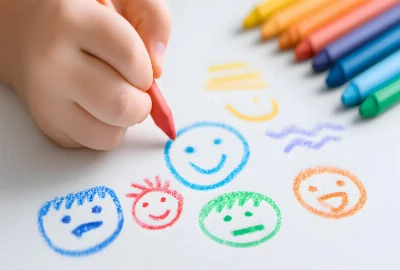Clipping Reality: How We Edit Ourselves in 15-Second Bursts

We live in an era where reality itself feels compressed, packaged, and served in bursts no longer than the attention span of a casual scroll. Short-form video platforms like TikTok, Instagram Reels, and YouTube Shorts have transformed not only entertainment but also how we perceive ourselves. Instead of diaries, long captions, or even blog posts, many of us now narrate our lives through a clip that lasts no more than 15 seconds. These snippets of existence are less about what happens in real life and more about how that reality can be clipped, edited, and presented. In this sense, “clipping reality” is not just a media practice—it’s a cultural phenomenon.
At first glance, these micro-videos appear spontaneous and authentic. But behind every clip lies a subtle act of editing: choosing the angle, trimming the pauses, syncing with music, adding captions, and often rehearsing until the moment feels “natural enough.” What we post is rarely a raw reflection—it’s a performance, an edited version of ourselves that balances relatability with aesthetics.
This blog unpacks the semiotics and psychology of short-form self-expression. We’ll explore how people “clip reality” to shape identity, how authenticity is negotiated within such tight timeframes, and what it means for our cultural relationship with storytelling. More importantly, we’ll offer insights on how to navigate this landscape consciously—without losing sight of who we are behind the edits.
The Performance of Everyday Life in 15 Seconds
The rise of short-form video has turned everyday activities into performative acts. Making coffee, walking your dog, or even sitting silently in your room can all be reframed as content once condensed into a clip. What once seemed ordinary becomes staged when a camera is rolling, and users are no longer living their lives passively—they are anticipating how their lives can be performed.
This shift has roots in Erving Goffman’s classic theory of everyday life as performance, but the 15-second limit intensifies it. With such a small window of time, creators are pushed to exaggerate, simplify, or dramatize events so they’re immediately engaging. Think about it: a real conversation might take minutes to unfold, but on video, it’s sliced into a witty punchline or a dramatic pause. The unremarkable is remixed into highlight reels, reinforcing the idea that only the most striking fragments of our day are worth attention.
The performance also includes careful self-curation. Lighting, filters, background music, and jump cuts transform reality into an aesthetic package. Even the “messy” moments that trend—the just-woke-up face, the clumsy blooper—are often rehearsed or strategically shared. Authenticity itself becomes part of the act.
This has major implications for how we see ourselves. When we’re constantly anticipating the next “clippable” moment, life starts to feel like an ongoing audition. We filter not only what we show but also what we experience. In the end, clipping reality doesn’t just edit our videos—it edits our perception of daily living.

Authenticity vs. Aesthetic: The New Digital Tug-of-War
One of the paradoxes of clipping reality is the tension between being “real” and being “watchable.” Audiences crave authenticity, yet platforms reward aesthetic polish. The result is a tug-of-war where creators must balance relatability with production value.
On one end of the spectrum, overly staged content risks alienating viewers who sense it’s fake. On the other end, videos that are too raw may be dismissed as boring or unshareable. This is why so many creators adopt a “casual but curated” style: a natural laugh that was filmed on the third take, or a quick story told in a way that feels off-the-cuff but was carefully timed.
The platforms themselves enforce this balance. TikTok’s algorithm, for example, favors content that grabs attention within the first few seconds, which pressures creators to cut pauses, ramp up energy, or add visual hooks. The aesthetics of speed—quick edits, punchy soundtracks, vibrant filters—become almost unavoidable. Meanwhile, Instagram Reels leans heavily into lifestyle imagery, pushing users toward aspirational, aestheticized clips.
For viewers, this creates a new standard of authenticity—one that looks real but feels better than real. We unconsciously measure our own lives against these stylized bursts, comparing our unedited mornings to someone’s choreographed “morning routine.” This contributes to what psychologists call “self-discrepancy,” where the gap between our actual selves and our curated selves creates stress or dissatisfaction.
Ultimately, the struggle between authenticity and aesthetic isn’t just about content creation—it’s about identity. Every clip we post is a negotiation: do we want to look real, or do we want to look good? The truth is, most of us want both.

The Psychology of Editing Ourselves Down
Editing is not just a technical process—it’s psychological. Every decision to trim a pause, remove an awkward angle, or add a caption reflects how we wish to be seen. Clipping reality means clipping away imperfections, silences, and messiness. In short, it’s clipping away parts of ourselves.
This editing process taps into deeper psychological forces:
Self-presentation theory: We want others to see the best versions of ourselves, so we curate content that aligns with how we want to be perceived.
Cognitive dissonance: When our unfiltered lives clash with our edited personas, we experience discomfort. Many of us resolve this by editing even more—tightening the gap between how we live and how we show we live.
Social validation: Each like, comment, and share becomes reinforcement that the edited self is the “better” self. Over time, this feedback loop can make us dependent on external validation to define our identities.
Interestingly, the brevity of clips amplifies this effect. With only 15 seconds, there’s no room for nuance. We strip ourselves down to punchlines, reactions, or mood snippets. This encourages reductive identity-making: you’re the “funny friend,” the “aesthetic cook,” the “chaotic student.” Complexity doesn’t trend—simplicity does.
But there’s also empowerment in this process. Editing allows us to take control of our narratives. People can highlight their creativity, humor, or resilience in ways that might not be visible in real life. The problem arises when the edited self becomes the only self we feel comfortable showing.

Storytelling in the Age of Short-Form Video
Despite the brevity, short-form video is still storytelling. It’s just storytelling compressed into fragments. In the past, narratives required buildup, character development, and resolution. Now, a glance, a cut, or a sound effect can carry meaning instantly.
Creators have mastered new storytelling techniques to fit these microformats:
Jump cuts as narrative speed-ups. Instead of showing a process in full, multiple clips condense it into a fast-paced sequence.
Trending sounds as shorthand. An audio clip instantly signals mood, tone, or joke setup without needing much explanation.
Visual tropes as archetypes. A certain camera angle or outfit can communicate “this is a glow-up,” “this is cozy,” or “this is ironic.”
This new storytelling language reflects our shifting cultural values. We want narratives that are instantly digestible but emotionally resonant. The clip doesn’t need to be long to feel meaningful; it needs to hit the right symbol, tone, or rhythm.
However, this compression comes with trade-offs. Stories lose depth, context, and subtlety. A breakup story becomes a single sad glance synced to a piano track. A political message is reduced to a slogan layered over trending audio. The risk is that we begin to interpret our own lives in similar shorthand—reducing complex emotions into clippable highlights instead of full arcs.
The future of storytelling may involve finding ways to reintroduce nuance into these bite-sized formats. Already, some creators use series or stitched clips to expand narratives across multiple posts. This suggests that even within a world of fragments, we still crave bigger stories.




